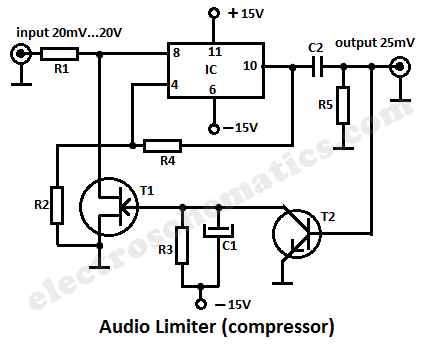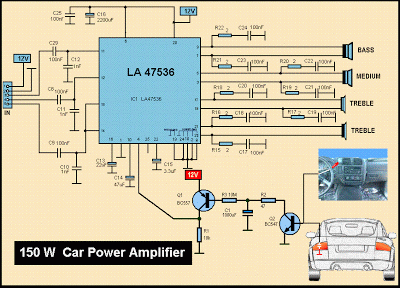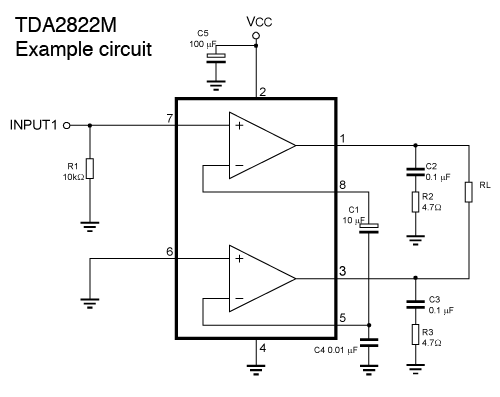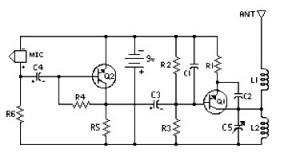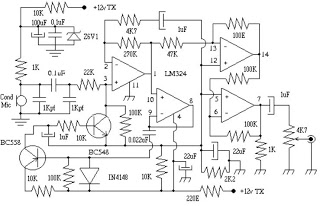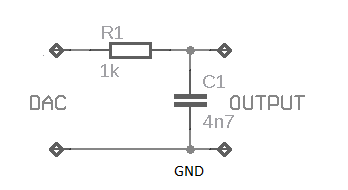
Audio conductivity tester with LM3909

This works with a small geleidingstestertje LM 3909. It allows a tester beeps when the resistance between the probes between 0 and 100 ? lies. Due to the volume of the beep, the resistance between the probes can be determined. More: R1 = 1 kOhm C1 = 10 uF C2 = 100 nF LS Speaker = 12 to 16 ? IC1 = LM 3909
The circuit described utilizes the LM 3909 integrated circuit, which is commonly used in various electronic applications, including resistance testing. This specific application involves a simple resistance measurement setup, where the circuit produces an audible beep through a speaker (LS) when the resistance between two probes falls within a specified range (0 to 100 ohms).
The primary components of the circuit include:
- **R1 (1 kOhm)**: This resistor is likely used to limit the current flowing through the circuit, ensuring that the LM 3909 operates within its safe limits while measuring resistance.
- **C1 (10 µF)**: This capacitor may be employed for filtering purposes, smoothing out any voltage fluctuations that could affect the accuracy of the resistance measurement or the sound output from the speaker.
- **C2 (100 nF)**: This capacitor is typically used for decoupling, helping to stabilize the power supply to the LM 3909 and prevent noise from affecting the circuit's performance.
- **LS (Speaker, 12 to 16 ohms)**: The speaker produces an audible beep when the circuit detects a resistance within the specified range. The volume of the beep can vary depending on the resistance detected, providing a clear indication of the measured value.
- **IC1 (LM 3909)**: The LM 3909 is the heart of the circuit, functioning as a timing and control device. It can generate a tone output based on the input resistance detected by the probes. The frequency and duration of the beep can be modulated based on the resistance value, allowing for a more intuitive understanding of the measured resistance.
The circuit operates by applying a small voltage across the probes. When a resistance within the specified range is detected, the LM 3909 activates the speaker, producing a beep. The frequency of the beep may be influenced by the resistance value, offering a method of determining the resistance level audibly. The design is straightforward, making it suitable for educational purposes or simple testing applications.This works with a small geleidingstestertje LM 3909. It allows a tester beeps when the resistance between the probes between 0 and 100 ? lies. Due to the volume of the beep, the resistance between the probes can be determined. R1 = 1 kOhm C1 = 10 uF C2 = 100 nF LS Speaker = 12 to 16 ? IC1 = LM 3909 🔗 External reference
The circuit described utilizes the LM 3909 integrated circuit, which is commonly used in various electronic applications, including resistance testing. This specific application involves a simple resistance measurement setup, where the circuit produces an audible beep through a speaker (LS) when the resistance between two probes falls within a specified range (0 to 100 ohms).
The primary components of the circuit include:
- **R1 (1 kOhm)**: This resistor is likely used to limit the current flowing through the circuit, ensuring that the LM 3909 operates within its safe limits while measuring resistance.
- **C1 (10 µF)**: This capacitor may be employed for filtering purposes, smoothing out any voltage fluctuations that could affect the accuracy of the resistance measurement or the sound output from the speaker.
- **C2 (100 nF)**: This capacitor is typically used for decoupling, helping to stabilize the power supply to the LM 3909 and prevent noise from affecting the circuit's performance.
- **LS (Speaker, 12 to 16 ohms)**: The speaker produces an audible beep when the circuit detects a resistance within the specified range. The volume of the beep can vary depending on the resistance detected, providing a clear indication of the measured value.
- **IC1 (LM 3909)**: The LM 3909 is the heart of the circuit, functioning as a timing and control device. It can generate a tone output based on the input resistance detected by the probes. The frequency and duration of the beep can be modulated based on the resistance value, allowing for a more intuitive understanding of the measured resistance.
The circuit operates by applying a small voltage across the probes. When a resistance within the specified range is detected, the LM 3909 activates the speaker, producing a beep. The frequency of the beep may be influenced by the resistance value, offering a method of determining the resistance level audibly. The design is straightforward, making it suitable for educational purposes or simple testing applications.This works with a small geleidingstestertje LM 3909. It allows a tester beeps when the resistance between the probes between 0 and 100 ? lies. Due to the volume of the beep, the resistance between the probes can be determined. R1 = 1 kOhm C1 = 10 uF C2 = 100 nF LS Speaker = 12 to 16 ? IC1 = LM 3909 🔗 External reference
